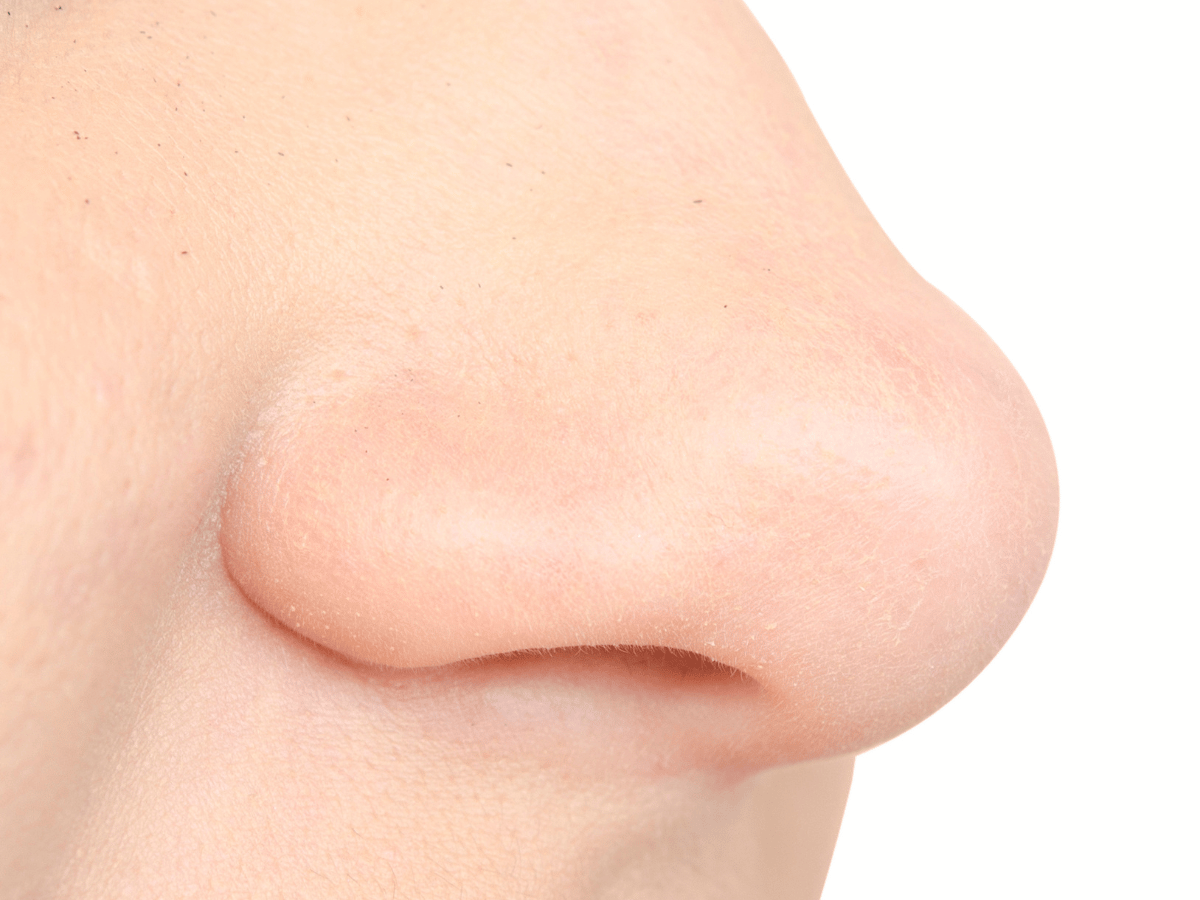How Much Does a Nose Job Cost in California? A Complete 2025 Price Guide
Oct-15-2025

California, particularly its epicenters in Los Angeles and the Bay Area, is widely regarded as the global capital of aesthetic plastic surgery. It’s where the world’s most discerning patients come to find the most skilled, artistic, and technologically advanced surgeons. At the very top of the list of in-demand procedures is rhinoplasty, or a "nose job."
Given its reputation for luxury and quality, the most practical and pressing question for any prospective patient is: "How much does a nose job cost in California?"
If you've started your research, you’ve likely seen a dizzyingly wide range of prices. You might see ads for a $5,000 nose job in one place and hear rumors of a $50,000 procedure in another. This discrepancy is confusing and makes it difficult to budget for what is a truly life-changing investment.
The simple truth is that a rhinoplasty is not a "product" with a fixed price tag. It is one of the most complex and delicate surgical procedures in all of plastic surgery. The final cost is a bespoke figure, reflecting a combination of your unique anatomy, your aesthetic goals, the surgeon's expertise, and the level of safety and care provided.
This comprehensive guide is designed to provide complete transparency. We will deconstruct every component that goes into the final cost, explain the factors that cause the price to vary, and give you a realistic understanding of what you are investing in when you seek a world-class rhinoplasty in California.
The Short Answer: A Realistic Price Range for a Nose Job in California
Let's address the main question first. While a final quote is only possible after an in-person consultation and examination, a realistic, all-inclusive price range for a high-quality rhinoplasty in California in 2025 is:
-
Primary Rhinoplasty (First-Time Nose Surgery): $12,000 to $25,000+
-
Revision Rhinoplasty (Secondary or Corrective Surgery): $20,000 to $40,000+
Why is this range so broad? And why is a revision so much more expensive? The answer lies in deconstructing what you are actually paying for. The price you are quoted is not a single number but a bundle of several critical fees.
Deconstructing Your Quote: The 4 Core Components of Your Total Cost
A transparent, all-in quote from a reputable, board-certified cosmetic surgeon will be composed of four primary components. Be very wary of any advertised price that does not clearly include all of these.
1. The Surgeon's Fee
This is the largest and most variable component of the total cost. The surgeon's fee is a direct reflection of their:
-
Board Certification & Training: Is the surgeon board-certified by the American Board of Plastic Surgery? This is the absolute minimum requirement and ensures they have completed a rigorous and accredited training program.
-
Experience & Specialization: A general cosmetic surgeon who performs a few nose jobs a month will have a different fee than a true rhinoplasty specialist who has dedicated their entire career to the art of nasal surgery and performs several hundred a week.
-
Artistic Reputation & Demand: In California, top surgeons are known for their specific aesthetic. Some are masters of the "natural, never-been-touched" look, while others are known for creating a specific type of defined tip. A surgeon with a 20-year track record of consistently beautiful results and a long waitlist will, justifiably, command a higher fee. You are paying for their artistic eye and proven experience, which is the best insurance against a poor result.
2. The Anesthesiologist's Fee
A rhinoplasty is typically performed under general anesthesia. This is not the place to cut corners. Your safety and comfort depend entirely on the anesthesiologist. A premier practice in California will use a board-certified anesthesiologist (an MD), not a nurse anesthetist (CRNA). This fee covers the cost of this highly-trained medical doctor who will be dedicated to monitoring your vital signs and managing your anesthesia for the entire duration of the procedure. This fee is almost always billed based on time, typically in 15 or 30-minute increments.
3. The Surgical Facility Fee
This is the fee for the use of the operating room. A reputable surgeon will not perform a rhinoplasty in a back room of their office. They will operate in a fully accredited surgical facility (such as AAAASF, JCAHO, or Medicare-certified). This accreditation is your guarantee that the facility meets the same rigorous standards for safety, sterilization, and emergency equipment as a hospital. This fee covers:
-
The rent for the operating room.
-
The highly-trained, licensed nursing and technical staff.
-
All sterile surgical supplies (gowns, sutures, dressings, etc.).
-
The advanced monitoring and surgical equipment.
4. Associated Costs
This is a smaller category that bundles other necessities. A comprehensive quote should include:
-
Pre-operative lab work and medical clearance.
-
Post-operative medications (pain relievers, antibiotics).
-
All follow-up appointments (which often continue for a full year as you heal).
-
Some practices may charge a separate fee for advanced 3D imaging and simulation, while others bundle it into the consultation.
The Biggest Cost Drivers: Why One Nose Job Isn't Like Another
The four components above are the "what" of your quote. The "why" behind the final number is determined by the specific work you need done. A nose job is not a one-size-fits-all procedure.
1. Primary vs. Revision Rhinoplasty: The #1 Cost Factor
This is the most significant price differentiator. A revision rhinoplasty (a second, third, or even fourth nose surgery to correct a previous one) is exponentially more complex than a primary rhinoplasty (a first-time surgery).
Why is a revision so much more expensive?
-
Scar Tissue: The surgeon must navigate and operate through extensive internal scar tissue, which is tough, unpredictable, and lacks a good blood supply.
-
Compromised Structure: The previous surgeon may have removed too much cartilage, leaving the nose weak and unstable.
-
Need for Grafts: The surgeon almost always needs to rebuild the nose's structure. This requires harvesting cartilage grafts from other parts of your body, such as the ear or, more complexly, the rib. Harvesting a rib graft adds significant time, risk, and complexity to the surgery, dramatically increasing the cost.
A revision rhinoplasty is a reconstructive procedure that requires a true master of the craft. As a result, the surgeon's fee and the operating room time (which increases the anesthesia and facility fees) are substantially higher.
2. The Functional Component: Adding a Septoplasty
Many patients who are unhappy with the look of their nose also have trouble breathing. This is often caused by a deviated septum.
-
Rhinoplasty: A cosmetic procedure to change the shape of the nose.
-
Septoplasty: A functional, medically necessary procedure to straighten the septum and improve breathing.
When a surgeon performs both at the same time (a "septo-rhinoplasty"), it adds complexity and time to the procedure, which increases the cost. However, there is a potential silver lining: health insurance will not cover the cosmetic rhinoplasty, but it may cover the functional septoplasty portion. This can sometimes reduce your total out-of-pocket investment.
3. Surgical Technique and Complexity
The specific changes you desire will dictate the surgical plan.
-
Open vs. Closed: A "closed" rhinoplasty is done through incisions inside the nostrils. An "open" rhinoplasty involves a small incision across the columella (the skin between the nostrils) to lift the skin and allow the surgeon to work with direct vision. Complex tip work or revisions often require an open approach, which can be a longer procedure.
-
Scope of Work: A patient who just wants a small hump removed will require a less complex (and thus less expensive) surgery than a patient who needs a hump removed, their tip refined, their nostrils narrowed, and their nose straightened.
The California Factor: Why Location Within the State Matters
"How much does a nose job cost in California?" is a broad question because California is a massive state with very different economic markets. The cost is directly tied to the cost of living and running a practice in a specific area.
-
Premium Markets (Beverly Hills, Newport Beach, Palo Alto): These areas have the highest concentration of world-renowned rhinoplasty specialists and the highest overhead costs (rent, staffing) in the nation. This is where you will find prices at the top end of the range. You are paying for access to surgeons who are often pioneers in the field, setting the standards for the rest of the world.
-
Major Metro Markets (San Diego, San Francisco, Sacramento): You can find exceptional, board-certified cosmetic surgeons in these cities as well. The prices may be slightly less than in Beverly Hills, but you should still expect to pay a premium for high-quality, safe, and artistic results.
-
Other Markets (e.g., Central Valley, Inland Empire): The cost of living and practice overhead is lower in these areas, so you may find lower average prices. However, you must still do your due diligence to ensure the surgeon is board-certified and has extensive experience specifically in rhinoplasty.
The Danger of "Bargain" Rhinoplasty: Why the Cheapest Option is the Most Expensive Mistake
In your search, you will inevitably see ads for "bargain" nose jobs, either in California or abroad (medical tourism). A $5,000 rhinoplasty may seem tempting, but it is a massive red flag.
A practice that offers such a low price is cutting corners, period. They may be:
-
Using an unqualified or non-board-certified surgeon.
-
Operating in an unaccredited in-office room, which is a major safety risk.
-
Using a nurse anesthetist instead of a medical doctor.
-
Rushing through the procedure, leading to a "cookie-cutter" and unnatural result.
Remember this critical fact: The cost of a good revision rhinoplasty is always 1.5x to 2x the cost of a good primary rhinoplasty.
Your face is the last place you should be bargain hunting. A bad nose job can be emotionally and financially devastating. The investment in a top-tier, board-certified, and experienced surgeon is your single best insurance policy against a poor outcome.
Top Searched FAQs About Rhinoplasty Costs
1. Does health insurance ever cover a nose job? No, health insurance does not cover any part of a cosmetic procedure. However, if you have a documented breathing problem from a deviated septum or a deformity from a previous injury, your insurance may cover the "functional" portion of the surgery (e.g., the septoplasty or reconstructive component).
2. Is a "liquid rhinoplasty" (non-surgical nose job) a cheaper alternative? Yes, a liquid rhinoplasty, which uses dermal fillers to reshape the nose, is significantly cheaper (typically $1,500 - $3,000). However, it is not permanent(results last 1-2 years), it can only add volume (it cannot make a nose smaller or remove a hump), and it has its own unique set of risks.
3. Is financing available for a nose job in California? Yes. Virtually all reputable cosmetic surgery practices in California offer financing plans through third-party medical credit companies like CareCredit® or Alphaeon®. This allows you to pay for your procedure in manageable monthly installments.
Conclusion: An Investment in Artistry, Safety, and Yourself
The cost of a rhinoplasty in California reflects the state's status as a center of surgical excellence. The price is not just for a procedure, but for an all-inclusive experience that prioritizes your safety, comfort, and, most importantly, a natural, lifelong result.
Your surgeon's expertise is the most valuable part of this investment. You are commissioning a one-of-a-kind work of art, and the canvas is the center of your face. While this guide provides a realistic overview, the only way to get a definitive, accurate quote is to schedule a personal consultation with a board-certified cosmetic surgeon.











Luxe Team